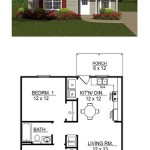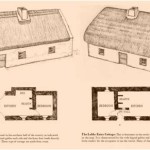Craft a Winning Business Plan for Successful House Flipping
Flipping houses can be a lucrative endeavor, but success hinges on a well-structured business plan. Here are the essential elements to include:
1. Executive Summary
Provide an overview of your business, including its concept, target market, and financial objectives. Briefly highlight your experience and qualifications in the real estate industry.
2. Market Analysis
Thoroughly research the local real estate market, including supply and demand trends, competition, and potential investment areas. Identify properties with high appreciation potential and strong resale value.
3. Property Acquisition Strategy
Outline how you will identify, evaluate, and acquire properties for flipping. Consider different acquisition channels, such as auctions, foreclosures, and wholesale deals. Develop criteria for selecting properties based on factors like location, condition, and potential profit margin.
4. Renovation and Construction Plan
Describe the renovations and repairs you plan to make on the properties. Provide details on materials, labor costs, and estimated timelines. Focus on value-adding improvements that enhance the property's appeal and resale value.
5. Marketing and Sales Strategy
Develop a comprehensive marketing plan to showcase your renovated properties and attract potential buyers. Utilize online and offline marketing channels, such as social media, online listings, and networking events. Highlight the property's unique features and the value it offers to buyers.
6. Financial Projections
Estimate the costs associated with purchasing, renovating, and selling the properties. Calculate potential profit margins and return on investment. Consider variables such as financing costs, taxes, insurance, and holding costs. Ensure that your financial projections are realistic and based on market data.
7. Exit Strategy
Determine how you will exit the business and realize your profit. Consider different options such as selling the flipped properties, holding them for rental income, or partnering with other investors. Outline your plan for managing any ongoing expenses or liabilities.
8. Legal and Regulatory Compliance
Identify the legal and regulatory requirements for house flipping in your jurisdiction. Obtain necessary licenses, permits, and insurance to ensure compliance. Address issues such as zoning regulations, building codes, and environmental concerns.
9. Team and Resources
Describe the team of professionals you will work with, including contractors, real estate agents, and attorneys. Outline their roles and responsibilities in the house flipping process. Identify the resources you will need, such as financing, software, and equipment.
10. Risk Assessment and Mitigation
Identify potential risks associated with house flipping, such as market fluctuations, construction delays, and legal disputes. Develop mitigation strategies to manage these risks and minimize their impact on your business.

Real Estate House Flipping Business Plan Sample Pages Black Box Plans

Real Estate House Flipping Business Plan Sample Pages Black Box Plans

House Flipping Business Plan A4 Word Document

Supply A Real Estate House Flipping Company Business Plan Template By Jssnetbay Fiverr

Real Estate House Flipping Business Plan Sample Pages Black Box Plans

Real Estate House Flipping Business Plan Template Black Box Plans

Real Estate Agency Business Plan House Flipping Millionaire For Agent Bus Template Free Valuation
What Are Some Business Plan Examples For Flipping Houses Quora

How To Start A House Flipping Business In 7 Steps Free

Real Estate House Flipping Business Plan Sample Pages Black Box Plans








